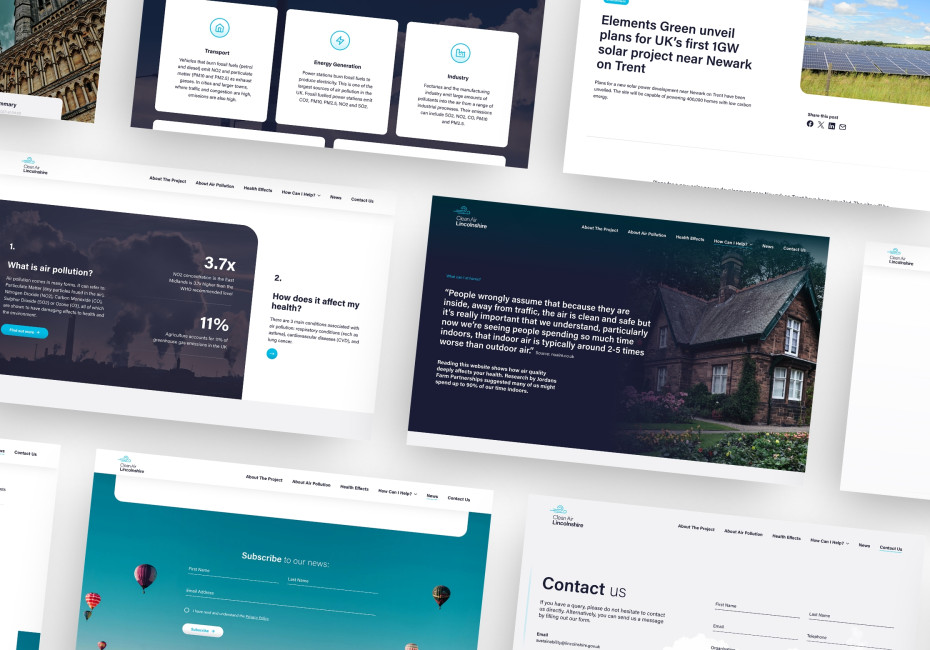Related services
Let’s be honest, it's easier to send a speculative email to a bunch of agencies saying 'I need a new website, what's the cost?'. But the truth is, the answer really is like 'how long is a piece of string?'.
A solid brief is the secret ingredient to accurate pricing, a smooth, stress-free process and a website that actually delivers what you need. Think of it as the blueprint that keeps everyone on the same page and ensures your new site does what it’s supposed to do: work for your business.
So, what should go into a great website brief? Let’s break it down.
First off: Why is a solid website brief so important?
A good brief is like a roadmap. It outlines where you want to go and how to get there. Without it, projects can veer off course or head off in totally the wrong direction to begin with. It can lead to misunderstandings, delays and a website that misses the mark. By clearly defining your goals, audience, design requirements and technical scope upfront, you make sure everyone – from designers to developers – is aligned from day one.
Creating a great brief isn't as tricky as you might think, especially if you follow these simple steps:
Step 1: Tell us about your business
Before we start designing or developing anything, we need to understand your business inside and out. Think of this as setting the scene.
Some key things to include:
What do you do?
A simple, clear explanation of your business.How do your services benefit your clients?
What problems do you solve for them?Who are your clients?
Your target audience and what they need.What are their overarching goals?
What's the big picture ambition?How do you currently attract your audience?
SEO, social media, referrals, paid ads, tenders?How do they usually contact you, and what’s their first question?
This helps shape your content and call-to-actions.What makes you different?
Your unique selling points and brand personality.
Step 2: Tell us about your goals
Now that we know what your business is about, we need to understand what you want from your new website.
Ask yourself:
What are you looking to achieve?
More leads, increased sales, brand awareness?What’s the primary purpose of the site?
E-commerce, lead generation, information hub?What other benefits would you like it to offer?
Newsletter sign-ups, recruitment, building a community?Do you have specific targets?
Measurable goals help us to shape your web strategy and consider key performance indicators (KPIs).
Step 3: Give us boundaries
Every project needs some guardrails to keep things on track. Two key ones are:
What’s your deadline?
Do you have a must-hit launch date?What’s your budget?
Even a rough idea helps us tailor solutions to fit your investment level.
Step 4: Tell us about the team
Who’s involved in decision-making? A clear understanding of stakeholders helps streamline the process and avoid last-minute surprises:
Who are the key decision-makers?
Their priorities and ambitions for the site.Are there other stakeholders?
Do they have different objectives?
Step 5: Website specification
Don’t worry – you don’t need to be a tech expert. Just tell us what you need your website to do. This might include:
A content management system (CMS) so you can update content easily
Online purchasing (e-commerce)
News or blog
Product catalogue
Client login area
Interactive map
Anything else that’s crucial
Step 6: Third-party integrations
Does your website need to connect with other systems? This might include things like:
A CRM (customer relationship management) system
Accounting software
HR system
Email newsletter platform
Any other third-party tools that need to communicate with your site
The more detail you can provide upfront, the smoother the process will be.
A brief conclusion
A well-prepared brief makes all the difference. It ensures your project runs efficiently, your budget is used wisely and your website delivers exactly what you need.
If you’re gathering estimates from multiple agencies, taking the time to create a strong brief will mean that you can be confident you're comparing like-for-like end products. A little extra effort now can save a lot of time, money and stress later down the line!
If you'd like help putting together a brief then get in touch.
For more news follow us @rootstudiouk
Similar posts

In a world crammed with endless scrolling, pop-ups, flashing offers and ‘read more’ rabbit holes, the real competition isn’t just other businesses - it’s cognitive overload.

Most websites don’t have a traffic problem - they have a conversion problem. Conversion Rate Optimisation (CRO) is simply about spotting issues and opportunities and gently guiding more of your visitors to take action.

